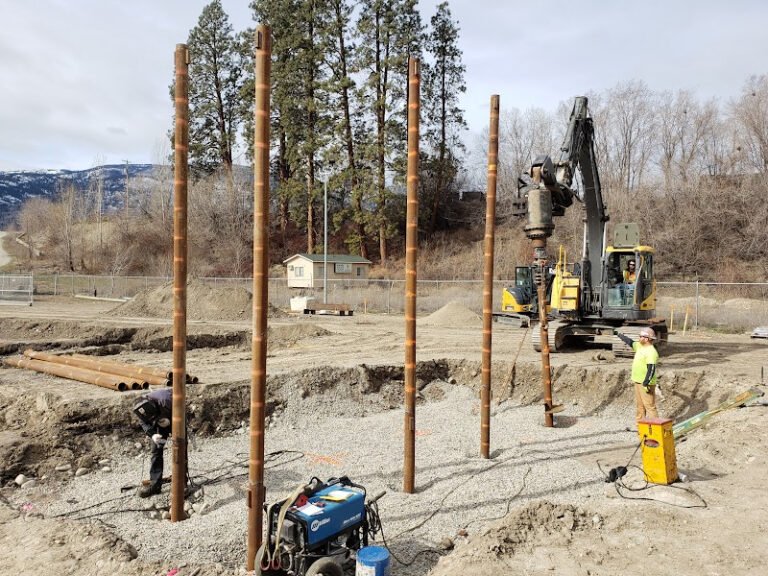No-code platforms like Bubble.io have transformed how businesses approach web and mobile application development. By eliminating the need for extensive coding, Bubble empowers startups, small businesses, and enterprises to bring ideas to life faster and more cost-effectively. However, while the platform is user-friendly, creating scalable, robust, and professional-grade applications requires expertise.
Hiring a skilled Bubble.io developer ensures that your project is executed efficiently, aligns with your business goals, and delivers a smooth user experience. But finding the right developer can be challenging without a clear strategy. This step-by-step guide provides a structured approach to hiring a Bubble.io developer in 2025, ensuring you select the right talent for your project.
Step 1: Define Your Project Scope and Objectives
Before searching for a developer, it’s essential to clarify your project goals. This will help you communicate your vision effectively and filter candidates based on relevant expertise. Ask yourself:
-
What type of application do I want to build (e.g., marketplace, SaaS, internal tool)?
-
Who is the target audience, and what problems should the app solve?
-
Which features are essential for the MVP, and which can be added later?
-
What are the long-term goals and scalability requirements?
-
Are there specific integrations with APIs or third-party tools required?
A clear project scope helps both you and the developer stay aligned on expectations and timelines.
Step 2: Choose the Right Hiring Model
There are several ways to hire Bubble.io developers, each with its advantages:
-
Freelancers: Ideal for smaller projects or MVPs, freelancers are flexible, cost-effective, and often faster to onboard. Platforms like Upwork, Fiverr, and Codemap are popular for sourcing Bubble.io freelancers.
-
Agencies: Bubble development agencies offer end-to-end services, including design, development, and project management. They are suitable for larger or more complex projects, providing reliability and faster delivery.
-
In-House Developers: Hiring a full-time Bubble.io developer ensures continuity, deep product knowledge, and ongoing support. This is ideal for startups with long-term app plans.
Consider your budget, timeline, and project complexity when deciding which model fits your needs.
Step 3: Identify Key Skills and Expertise
Not all Bubble.io developers have the same level of proficiency. Look for candidates who bring a combination of technical skills, design expertise, and business understanding, including:
-
Database design and backend workflow optimization.
-
UI/UX design for responsive and intuitive interfaces.
-
API and third-party integration skills.
-
Problem-solving and debugging expertise.
-
Strategic thinking to align the app with business goals.
-
Knowledge of app scalability, performance optimization, and security best practices.
Evaluating candidates on these skills ensures you hire someone capable of delivering a professional, scalable solution.
Step 4: Source Candidates
Once you know what you need, it’s time to find potential developers. Common sources include:
-
Freelance Marketplaces: Upwork, Fiverr, Toptal, and PeoplePerHour.
-
Bubble.io Community: The official forum connects businesses with experienced developers.
-
No-Code Talent Platforms: Sites like Codemap, WeLoveNoCode, and NocodeDevs specialize in vetted no-code experts.
-
LinkedIn: Search for developers with “Bubble.io” experience to identify freelancers or full-time candidates.
-
Development Agencies: Partner with agencies that specialize in Bubble.io projects.
Each source has trade-offs in cost, reliability, and expertise. Consider your priorities and timeline when selecting where to search.
Step 5: Evaluate Portfolios and Previous Work
A candidate’s portfolio is one of the most reliable indicators of their capability. Review previous projects to assess:
-
Complexity and scale of apps developed.
-
UI/UX quality and responsiveness.
-
Integration with APIs, payment gateways, or other tools.
-
Functionality and workflow design.
Where possible, speak with past clients to verify their experience, professionalism, and reliability. A well-documented portfolio demonstrates both skill and practical experience.
Step 6: Conduct Technical Assessments
Technical evaluation is crucial to ensure the developer can handle your project. Consider:
-
Providing a small project or test task to evaluate problem-solving and workflow design.
-
Asking scenario-based questions to assess decision-making in complex situations.
-
Discussing scalability strategies to see if they plan for growth from the start.
-
Reviewing knowledge of Bubble.io plugins, APIs, and performance optimization.
These assessments provide confidence that the developer can deliver beyond basic app creation.
Step 7: Assess Communication and Collaboration Skills
Even the most skilled developer can become a bottleneck if communication is poor. Evaluate:
-
Responsiveness and clarity in emails or messages.
-
Ability to explain technical concepts in simple terms.
-
Collaboration style, especially if they will work with a team or remote stakeholders.
-
Transparency regarding timelines, challenges, and project progress.
Effective communication ensures smoother workflows and reduces the risk of misunderstandings.
Step 8: Discuss Budget and Timeline
Cost and timeline should be discussed upfront to avoid surprises. Bubble.io development costs vary depending on project complexity:
-
Freelancers: $25–$80 per hour or $2,000–$5,000 for an MVP.
-
Agencies: $8,000–$20,000+ for medium to complex projects.
-
In-House Developers: Salaries vary based on experience and region.
Establish clear milestones, deliverables, and payment schedules. Transparent agreements prevent conflicts and keep the project on track.
Step 9: Onboard Your Developer
Proper onboarding sets the stage for successful collaboration. Provide:
-
A detailed project brief, including goals, target audience, and key features.
-
Wireframes, mockups, or references if available.
-
Access to project management tools like Trello, Asana, or Jira.
-
Regular check-ins for progress reviews and feedback.
Effective onboarding ensures the developer understands both technical requirements and business objectives.
Step 10: Prioritize Scalability and Long-Term Support
A professional Bubble.io developer will not just build your app—they will plan for its future. Ensure:
-
Database and workflows are designed to handle growth.
-
Security measures are implemented for sensitive data.
-
Performance optimization is in place to manage increased traffic.
-
Long-term maintenance and updates are part of the plan.
Building for scalability early reduces the need for costly rewrites and ensures a smoother growth trajectory.
Step 11: Maintain Continuous Collaboration
Post-launch collaboration is essential for app success. Maintain:
-
Open channels for bug fixes, updates, and feature enhancements.
-
Regular performance reviews to identify areas for improvement.
-
Feedback loops to incorporate user input into iterative updates.
Continuous collaboration helps your application stay relevant, secure, and user-friendly.
Conclusion
Hiring a Bubble.io developer is a strategic decision that can significantly impact the success of your project. Following this step-by-step guide—defining project scope, choosing a hiring model, evaluating skills, sourcing candidates, assessing portfolios, and onboarding effectively—ensures that you find the right talent to build a scalable, professional, and high-performing application.
In 2025, no-code platforms like Bubble.io are powerful tools for startups and businesses alike. By hiring the right developer, you can reduce development time, save costs, and focus on growth, while ensuring your digital product delivers an exceptional user experience. The right Bubble.io developer becomes more than just a coder—they become a strategic partner in your journey to digital success.





